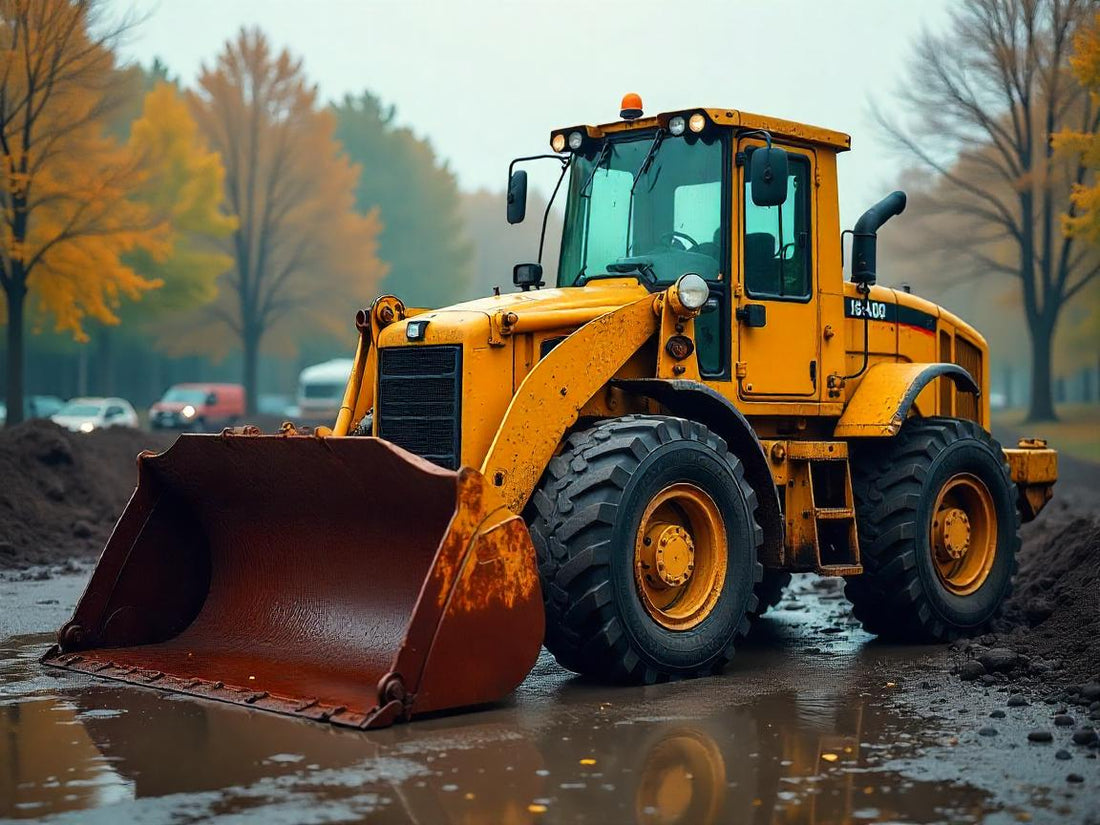Rain-soaked job sites, soggy fields, and constant humidity are more than simply inconveniences; they are quiet murderers of heavy machinery. Every wet season, mud and corrosion cost the construction, agriculture, and logistics industries millions of dollars in lost productivity, repairs, and premature replacement. For fleet managers, this is more than simply a maintenance issue; it's a war for productivity and profitability. Here's your tactical plan for protecting your fleet against nature's onslaught.
The Impact of Wet Season and Mud on Productivity.
Clogs tracks, hydraulics, undercarriages, and other moving parts.
1) Wet mud increases crushing weight; 1 m³ weighs around 1,600 kg. Engines and fuel efficiency may suffer as a result.
Hazard concealment: The chance of an accident rises when debris, rocks, and unstable terrain are hidden.
2) Corrosion: The Cunning Communicator.
When metal, moisture, and stray currents come together, electrolytic corrosion can happen, which can cause rapid rusting.
Pitting damage: The chemicals and salt in mud accelerate the degradation of metal by five to ten times.
The $24,000 lesson: Unchecked rust can demolish a $200,000 excavator's frame in 3-5 years.
Frontline Defense: Six Tactics to Protect Your Fleet
1. Undercarriage Warfare.
- To remove mud on a daily basis, use a smart pressure wash method.
- Use low-pressure, high-flow water (≤ 2,500 PSI) to prevent muck from entering seals.
- Concentrate on the important areas: track links, sprockets, rollers, and articulation joints.
Prevent mud buildup:
- Apply nonstick ceramic coatings to the undercarriage (lasts 6-12 months).
- Install mud scrapers to the tracks or wheels.
2. Corrosion Prevention: Rust-Inhibiting Sprays
Rust-inhibiting sprays:
- Coat exposed metal with lanolin-based inhibitors (self-healing and water-displacing).
- Critical targets include hydraulic rams, bucket joints, and boom pins.
Cathodic protection:
- For submerged machinery like pumps and marine accessories, supply sacrificial zinc anodes.
Galvanic Barriers:
- Use dielectric grease to prevent moisture from getting into electrical circuits.
3. Protect and seal hydraulic lines and other fluid systems:
Seals should be checked once a month, and if weeping is found, they should be replaced.
In really tough conditions, use braided hoses made of stainless steel.
Fuel Tank:
- The main cause of injector corrosion is microbial development, which may be prevented by using antimicrobial treatments.
- Tanks should be kept at least 95% full to prevent condensation.
4. Upgrade strategic equipment with corrosion-resistant alternatives.
Switch to electric:
- Machines such as the Typhon Vigor 2.5 Electric Forklift eliminate exhaust systems (a major source of corrosion) and fluid lines.
- Pins, bushings, and fasteners should all be specified as stainless.
Modular attachments:
- Quick-hitch systems (such as those found on the Typhon 18 Flex Pro) allow you to quickly shift between implements, decreasing the time it takes for mud to harden on idle tools.
5. Post-shift procedures for operator accountability and training:
- Require 10-minute cleaning sessions, even when it's raining.
- Utilize checklists inside the cab to monitor the amount of mud and debris.
Parking-related intelligence:
- You should never park on grass or dirt.
- Equipment can be raised with movable mats or gravel pads.
6. Keep an eye on corrosion triggers via telematics and predictive maintenance.
- Important zones are monitored by sensors for pH, salinity, and humidity.
- Schedule your washings automatically.
- Geo-fenced notifications when equipment leaves high-mud zones.
The Typhon Advantage: Built for Battle.
While no machine is immune to nature, Typhon's design stresses wet-weather resilience.
Kubota-Powered Toughness (18 Flex Pro) features enclosed components and enhanced filtration to prevent moisture penetration.
Sealed Electrical Systems (Vigor 2.5) feature IP-rated battery compartments and corrosion-resistant wire harnesses.
Quick-Hitch Efficiency: Reduce attachment exposure time by swapping tools in <60 seconds.
Bottom Line: Turn Rain Into Revenue.
A wet season does not have to result in lost revenues. By treating rust and dirt as active adversaries, you can:
Save up to 40% on maintenance costs, extend the equipment's life by three to five years, and reduce unscheduled downtime by thirty to fifty percent.
By providing your fleet with the right technologies, coatings, and practices, you can take charge of the rainy season.
Are you prepared to bolster your fleet? Discover the wet-weather warriors of Typhon.

